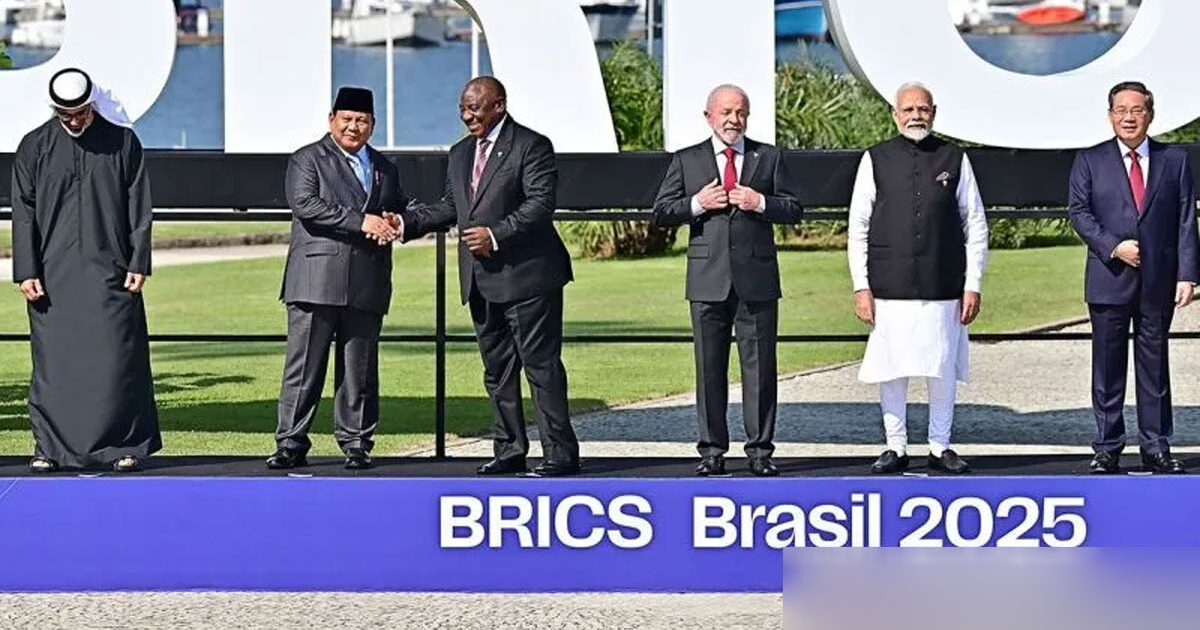The Significance of Presence in Global Leadership
Symbolism holds immense weight in the world of global politics, often shaping perceptions as much as actual policies. President Xi Jinping of China has made a notable decision not to attend this year’s BRICS summit, which will take place in Rio de Janeiro. This marks the first time he has missed the event since its inception, sparking widespread interest and speculation across the globe. While the official reason cited is “scheduling conflicts,” there are deeper implications that suggest a more complex narrative about China’s role within the BRICS coalition.
At first glance, the absence may seem inconsequential. Chinese Premier Li Qiang will represent Beijing at the summit, and the country’s foreign ministry has reiterated its commitment to BRICS and support for Brazil’s leadership. However, in international affairs, especially within institutions built on mutual symbolism and solidarity, the absence of a key figure can convey powerful messages—intentional or not—about shifting priorities, evolving strategies, and potential fractures within alliances.
This is not the first instance where President Xi has opted out of major international summits. In 2023, he declined to deliver a speech at the BRICS gathering in South Africa, delegating the task to his commerce minister without a clear explanation. The pattern of two high-profile absences in two years raises legitimate questions: Is China quietly stepping back from the frontline of BRICS leadership? Or is it signaling supreme confidence that its influence within the bloc is so firmly established that personal appearances are no longer necessary?
To understand the context, it is essential to recall the origins of BRICS itself. Initially conceived as a loose grouping of Brazil, Russia, India, China, and South Africa, the alliance represents economies outside the traditional Western sphere. BRICS has often been more aspirational than operational. Unlike NATO or the European Union, it lacks binding treaties or a common defense policy. Its strength lies in its symbolic power: a counterweight to Western dominance and a platform for the Global South to amplify its voice in world affairs.
China plays a central role in this group. It is the largest economy among the members, the principal driver of intra-BRICS trade, and a key player in development financing through institutions such as the New Development Bank. As of 2024, BRICS nations account for nearly 40% of global GDP—a significant rise from the mere 8% they represented at the dawn of the millennium. Much of this economic transformation has been underpinned by China’s relentless growth and its ambitious Belt and Road Initiative, which has spread Chinese influence across Africa, Latin America, and Asia.
Given this commanding position, it is tempting to view Xi’s absence as a mark of confidence rather than retreat. Just as Franklin D. Roosevelt or Winston Churchill did not need to attend every Allied summit in person to exert influence during World War II, Xi may be demonstrating that Beijing’s dominance is now institutionalized within BRICS. Whether he physically attends or not, China remains the gravitational center of the bloc’s economic and strategic agenda.
Yet, this interpretation overlooks a crucial point: global leadership is not only about leverage but also about presence. History teaches that absent leaders can erode alliances. The post-World War I disillusionment with the League of Nations, largely due to the U.S.’s refusal to fully commit, is a stark example of how absenteeism can undercut global institutions. Even in modern times, when U.S. presidents skip key summits—as Donald Trump did with ASEAN gatherings—it often sows confusion and weakens diplomatic cohesion.
Moreover, symbolism matters even more for a grouping like BRICS, which is still in the process of defining its identity and role in the evolving world order. In this context, the Chinese president’s absence could inadvertently reinforce concerns about whether the bloc has the unity and shared vision necessary to challenge the Western-led system in a sustained and credible way.
A more plausible explanation lies in China’s broader recalibration of its global strategy. In recent years, Beijing has increasingly sought to exert influence through infrastructure investment, trade expansion, and technology rather than through high-profile diplomatic theater. Its growing economic ties with Africa, Latin America, and Central Asia, as well as its deep involvement in the Middle East through strategic partnerships with Iran and Saudi Arabia, illustrate a preference for concrete, often bilateral, engagements over symbolic multilateralism.
Furthermore, by maintaining a degree of ambiguity about its intentions—sometimes engaging, sometimes retreating—China may be borrowing a page from the playbook of leaders like Trump, who famously kept allies and adversaries guessing. In a fragmented world moving away from unipolarity, such unpredictability can be an asset. It prevents rival powers from coordinating against you and allows you to shift your diplomatic posture as circumstances change.
Looking ahead, the real test is not whether China skips another summit or two. The test is whether it remains willing to invest in the hard work of alliance management: building trust, resolving disputes, and showing up when it matters. The fate of BRICS as a credible alternative to Western-led institutions depends on such engagement. Without it, the bloc risks becoming little more than a statistical curiosity—a group that represents 40% of the global economy but fails to shape global outcomes.
In the end, Xi Jinping’s absence may not signify the end of China’s commitment to BRICS. But it may well mark the start of a more selective, calculated approach to global leadership—one that, while perhaps strategically sound for Beijing, carries the risk of weakening the very institutions through which leadership is exercised. Whether BRICS can thrive in such an environment will be one of the defining questions of the next decade.







